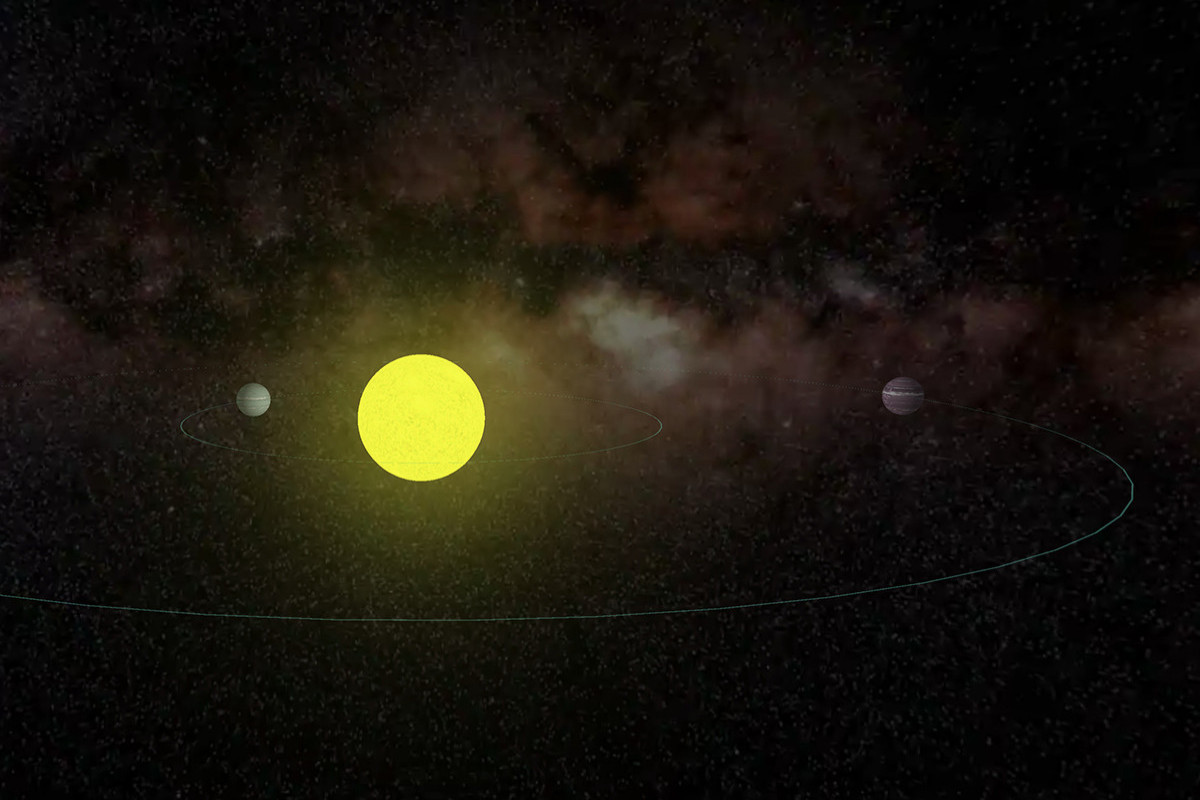Astronomers report the discovery of two new exoplanets orbiting a bright sun-like star about 175 light years away, APA reports.
The newfound alien worlds, designated HIP 104045 b and HIP 104045 c, were classified as a Jupiter analog and a super Neptune planet, respectively. The finding was detailed in a paper published March 2 on the pre-print server arXiv.
The radial velocity (RV) method to detect an exoplanet is based on the detection of variations in the velocity of the central star, due to the changing direction of the gravitational pull from an unseen exoplanet as it orbits the star. Thanks to this technique, more than 600 exoplanets have been detected so far.
Now, a team of astronomers led by Thiago Ferreira of the University of São Paulo in Brazil, reports the detection of two new exoplanets using the RV method. They observed a solar-type star HIP 104045 with the High Accuracy Radial Velocity Planet Searcher (HARPS) spectrograph on the 3.6m telescope of the European Southern Observatory (ESO) in La Silla, Chile. The observations, conducted as part of the Solar Twin Planet Search (STPS) program, resulted in the discovery of two massive extrasolar worlds.
"In this paper, we present the discovery of two planets in the HIP 104045 system: HIP 104045 c, which is a super-Neptune located closer to the star, and HIP 104045 b, which is the second Jupiter analog planet orbiting a sun-like star observed with the ESO/HARPS spectrograph for the STPS program, plus additional campaigns, that forms nearly 13 years of observations," the researchers wrote.
HIP 104045 b has a minimum mass of about 0.5 Jupiter masses and orbits the host star every 2,315 days, at a distance of some 3.46 AU from it. When it comes to HIP 104045 c, it has a mass of at least 0.136 Jupiter masses and its orbital period is 316 days. This super-Neptune exoplanet is located approximately 0.92 AU from the parent star.
HIP 104045 is a solar-age and relatively bright main-sequence unreddened star of spectral type G5V with a size and mass a few percent greater than that of the sun. The star has an effective temperature of 5,826 K and its age is estimated to be 4.5 billion years.
The astronomers noted that HIP 104045 presents a quite similarity to the sun in terms of its chemical abundance pattern, which has a lower amount of refractory/volatile elements when compared to solar twins. They assume that moderate enhancement of refractories in HIP 104045 means that it may have engulfed some rocky planet material.
"Based on the refractory composition of HIP 104045, which is situated between that of the refractory-poor sun and most of the refractory-rich solar twins (Meléndez et al. 2009), we initially postulated that its planetary system might resemble our own solar system—gas and ice giants populating the outer region (𝑎 > 3 AU), and the inner populated by rocky planets," the authors of the paper concluded.




 UPDATED'>
UPDATED'>

